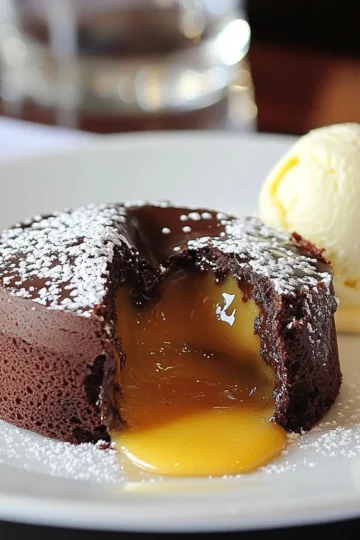Introduction
Cinnamon rolls have long been cherished as a comforting treat, evoking memories of cozy mornings and decadent brunch gatherings. Their soft, pillowy texture and warm, sweet aroma fill homes with a sense of nostalgia. While traditional cinnamon rolls are delicious on their own, adding a unique twist can elevate them to a whole new level of taste and enjoyment. Enter the raspberry cinnamon rolls with lemon glaze—a delightful fusion of flavors that combines the warmth of cinnamon with the tartness of fresh raspberries and the brightness of zesty lemon. This recipe not only tantalizes the taste buds but also reinforces the importance of homemade pastries in creating memorable moments with loved ones.

These raspberry cinnamon rolls are perfect for special occasions, lazy Sundays, or any day that calls for a little indulgence. The vibrant raspberry filling pairs beautifully with the sweet and tangy lemon glaze, making each bite a burst of flavor. Whether you’re a seasoned baker or a novice in the kitchen, this recipe is sure to impress. Let’s dive into the allure of these delightful rolls and explore the essential ingredients that make them extraordinary.
The Allure of Raspberry Cinnamon Rolls
Cinnamon rolls have been enjoyed across various cultures, each putting their own spin on this beloved pastry. From the classic American version slathered in icing to the Swedish kanelbullar, which features cardamom, these rolls have found a special place in our hearts and stomachs. The allure of cinnamon rolls lies not only in their comforting taste but also in their ability to bring people together. Baking a batch of cinnamon rolls can transform an ordinary day into something special, whether it’s a family gathering, a potluck with friends, or simply a quiet morning at home.
Adding fruit to baked goods is a trend that continues to gain popularity, as it enhances both flavor and nutrition. The addition of raspberries to cinnamon rolls not only provides a burst of tartness that cuts through the sweetness but also packs a nutritional punch. Raspberries are rich in vitamins, antioxidants, and fiber, making them a smart choice for elevating your baked treats. The combination of raspberry and lemon in this recipe not only brightens the flavor profile but also adds a refreshing twist that rejuvenates the traditional roll.
The melding of these flavors transforms classic cinnamon rolls into a modern delight, making them a standout choice for any occasion. With their appealing visual presentation and mouthwatering aroma, raspberry cinnamon rolls with lemon glaze are bound to impress anyone who takes a bite.
Essential Ingredients for Raspberry Cinnamon Rolls
To create the perfect raspberry cinnamon rolls with lemon glaze, it’s crucial to understand the role of each ingredient in the recipe. Let’s break down the essential components that come together to create this delightful pastry.
**Dough Ingredients**
1. All-Purpose Flour: The foundation of any good cinnamon roll is the dough, and all-purpose flour is the ideal choice for achieving the right texture. It strikes the perfect balance between strength and tenderness, allowing the rolls to rise beautifully while maintaining a soft and fluffy interior.
2. Sugar: Sugar not only sweetens the dough but also contributes to the browning process during baking. This caramelization enhances the overall flavor and gives the rolls an inviting golden hue. A combination of granulated sugar and brown sugar can be used to add depth to the flavor.
3. Yeast: Yeast is the driving force behind the dough’s rise. When activated, it ferments the sugars in the dough, producing carbon dioxide that creates air pockets, resulting in a light and airy texture. Using fresh yeast can yield the best results, but active dry yeast is a great alternative.
4. Milk: Warm milk helps to activate the yeast and adds moisture to the dough. It also contributes to the overall flavor and texture. Make sure the milk is warmed to about 110°F (43°C) to effectively activate the yeast without killing it.
5. Butter: Softened butter enriches the dough, imparting a rich flavor and creating a tender crumb. It also helps to create a slight flakiness in the rolls.
6. Egg: An egg adds richness and structure to the dough, helping it rise and hold its shape. It also contributes to the golden color of the finished product.
**Filling Ingredients**
1. Raspberries: Fresh raspberries are the star of the filling, providing a burst of tartness that contrasts beautifully with the sweetness of the dough. While fresh raspberries are preferred for their flavor and texture, frozen raspberries can also be used if fresh ones are unavailable. Just be sure to thaw and drain them before adding to the filling to avoid excess moisture.
2. Brown Sugar: Brown sugar adds a deep, caramel-like flavor to the filling, enhancing the overall sweetness while complementing the tartness of the raspberries. It also helps to create a gooey texture that binds the filling together.
3. Cinnamon: Ground cinnamon is a classic addition to any cinnamon roll filling. Its warm, spicy notes enhance the overall flavor and pair perfectly with the sweetness of the sugar and the tartness of the raspberries.
**Lemon Glaze Components**
1. Powdered Sugar: Powdered sugar is the key ingredient for creating a smooth, sweet glaze. It dissolves easily and creates a silky finish that drapes beautifully over the rolls.
2. Fresh Lemon Juice and Zest: The addition of fresh lemon juice and zest brings brightness and acidity to the glaze, cutting through the sweetness of the sugar. The zest adds an aromatic quality that elevates the overall flavor profile, making the glaze irresistible.
**Understanding Ingredient Quality**
Using high-quality ingredients is essential for achieving the best results in baking. Fresh raspberries, real butter, and organic eggs can significantly impact the flavor and texture of your raspberry cinnamon rolls. Additionally, be mindful of ingredient temperatures—ingredients like butter and eggs should be at room temperature for optimal mixing and dough development.
Step-by-Step Guide to Making Raspberry Cinnamon Rolls
Now that we’ve covered the essential ingredients that go into these delectable raspberry cinnamon rolls, let’s dive into the detailed, step-by-step process of making them from scratch. The journey begins with preparing the dough, which lays the foundation for our sweet rolls.
**Preparing the Dough**
1. Activate the Yeast: In a small bowl, combine warm milk, a teaspoon of sugar, and the yeast. Let it sit for about 5-10 minutes until it becomes frothy. This indicates that the yeast is active and ready to work its magic in the dough.
2. Combine Dry Ingredients: In a large mixing bowl, whisk together the all-purpose flour, granulated sugar, and salt. This ensures that the dry ingredients are evenly distributed before adding the wet ingredients.
3. Mix Wet Ingredients: In a separate bowl, combine the activated yeast mixture, softened butter, and egg. Mix until well combined.
4. Combine Wet and Dry Ingredients: Pour the wet mixture into the bowl of dry ingredients. Stir with a wooden spoon or spatula until the dough begins to come together.
5. Kneading the Dough: Transfer the dough onto a lightly floured surface. Knead the dough for about 8-10 minutes until it becomes smooth and elastic. Kneading is crucial for developing the gluten structure, which gives the rolls their chewy texture. The dough should be soft and slightly tacky but not overly sticky. If it sticks to your hands or the surface, you can incorporate a little more flour as needed.
6. First Rise: Shape the kneaded dough into a ball and place it in a greased bowl. Cover the bowl with a clean kitchen towel or plastic wrap and let it rise in a warm, draft-free area for about 1-2 hours, or until it has doubled in size. This is known as the first rise, and it allows the yeast to ferment and create air bubbles in the dough.
**Kneading Techniques**
Kneading is a vital step in the process of making raspberry cinnamon rolls. It allows the gluten in the flour to develop, which is essential for creating a soft and elastic dough. To knead effectively, follow these tips:
- Use the Palm of Your Hand: Push the dough away from you using the heel of your hand, then fold it back over itself. Rotate the dough a quarter turn and repeat the process. This technique helps to develop the gluten evenly.
- Check for Doneness: To determine if your dough is ready, perform the “windowpane test.” Take a small piece of dough and stretch it between your fingers. If it stretches thin enough to become translucent without tearing, it’s ready. If not, continue kneading for a few more minutes.
- Avoid Overworking: While kneading is important, be careful not to over-knead the dough, as this can lead to tough rolls. Aim for a balance of elasticity and tenderness.
**Crafting the Filling**
Once your dough has risen and doubled in size, it’s time to prepare the filling. This mixture of fresh raspberries, brown sugar, and cinnamon will create the luscious center of your cinnamon rolls.
1. Mash the Raspberries: In a medium bowl, gently mash the fresh raspberries with a fork, being careful not to over-mash them. You want to maintain some texture for the filling.
2. Combine Ingredients: Add the brown sugar and ground cinnamon to the mashed raspberries. Stir until the ingredients are well combined. The brown sugar will melt slightly during baking, creating a sweet, syrupy filling that seeps into the dough.
3. Assemble the Rolls: Once the dough has completed its first rise, roll it out onto a floured surface into a large rectangle. Spread the raspberry filling evenly across the dough, leaving a small border around the edges. This border will help to seal the rolls when you roll them up.
4. Roll and Cut: Starting from one long edge, carefully roll the dough tightly into a log. Once rolled, use a sharp knife or dental floss to slice the log into equal pieces, about 1-2 inches thick. Place the cut rolls into a greased baking dish, making sure to leave some space between them for their second rise.
As you craft your raspberry cinnamon rolls, you can already imagine the delightful aroma that will soon fill your kitchen. The process of creating homemade pastries is a rewarding experience that allows you to bring a bit of love and creativity into your cooking. Each step, from kneading to rolling, is an opportunity to connect with the ingredients and the essence of baking.
Stay tuned for the next part of this article, where we will explore the second rise, baking process, and the delightful lemon glaze that ties this entire recipe together. The anticipation of enjoying warm, gooey raspberry cinnamon rolls with a tangy lemon glaze will surely make the effort worthwhile. Happy baking!

Achieving the Perfect Spreadable Consistency for Lemon Glaze
To create a luscious lemon glaze that beautifully drizzles over your raspberry cinnamon rolls, it’s essential to achieve the right spreadable consistency. Start with powdered sugar as your base, which dissolves easily and gives that smooth texture we all crave. Gradually add fresh lemon juice, mixing until you reach a silky consistency that can glide off a spoon but isn’t too runny. If it’s too thick, add a few more drops of lemon juice; if too thin, sprinkle in more powdered sugar. The balance of sweetness from the sugar and tartness from the lemon juice is key to complementing the sweet and slightly tangy raspberry filling.
Flavor Balance with Raspberries
Raspberries bring a delightful tartness that can elevate the flavor profile of your cinnamon rolls. When incorporating them into your filling, consider the quantity. Too many raspberries can make the rolls soggy, while too few may not provide the desired burst of flavor. A good rule of thumb is to aim for a cup of fresh raspberries for every batch of dough. This quantity ensures you achieve a vibrant taste without overwhelming the rolls. Additionally, mixing in a bit of cinnamon with the raspberries can enhance the overall flavor, creating a delightful harmony between the fruits and spices.
Rolling and Cutting the Dough
Techniques for Rolling Dough Evenly
Once your dough has risen, it’s time to roll it out into a rectangle. To ensure even thickness, lightly flour your work surface and the rolling pin. Start by gently pressing the dough into a rectangle with your hands before using the rolling pin. Roll from the center outwards, rotating the dough as you go, to maintain a rectangular shape. Aim for a thickness of about ¼ inch to ensure that the rolls bake evenly and have a satisfying texture.
How to Cut Rolls for Consistent Baking
Cutting your rolls evenly is crucial for consistent baking. After spreading the raspberry filling over the rolled dough, use a sharp knife or a pizza cutter to slice the dough into strips. For best results, measure about 1 to 1.5 inches between each cut. A serrated knife can help you avoid crushing the dough, ensuring a clean cut. Once cut, arrange the rolls in a greased baking dish, leaving a little space between each roll to allow for expansion during the second rise.
Second Rise: The Key to Fluffy Rolls
Explanation of Fermentation and Its Effects on Texture
The second rise, or proofing, is vital for achieving fluffy and airy cinnamon rolls. This process allows the yeast to continue fermenting, producing carbon dioxide that creates air pockets in the dough. These air pockets are what give your rolls their light and fluffy texture. After cutting the rolls, cover them with a kitchen towel and let them rise for another 30 to 45 minutes in a warm environment. You’ll know they’re ready when they’ve doubled in size and feel puffy to the touch.
Best Practices for Creating the Right Environment for Rising
To create the perfect environment for your dough to rise, consider placing it in a warm, draft-free spot. An oven with the light on can provide a cozy environment, or you can place the rolls on top of a heating pad set to low. If your kitchen is particularly cold, you may also add a bowl of hot water to help maintain warmth and humidity. A moist environment helps prevent the dough from drying out, allowing for a more successful rise.
Baking Your Raspberry Cinnamon Rolls
Preheating the Oven: Why Proper Temperature Matters
Preheating your oven is a crucial step in baking. The ideal temperature for baking your raspberry cinnamon rolls is 350°F (175°C). A properly preheated oven ensures that the rolls start baking immediately, which contributes to the development of that golden crust while keeping the inside soft and fluffy. If you place your rolls in an unheated oven, they may not rise properly, leading to dense and less flavorful results.
Baking Tips for Perfectly Golden Rolls
When it comes to baking your rolls, keep a close eye on them as they bake. After about 20 minutes, rotate the baking dish to ensure even cooking. The rolls are done when they are beautifully golden brown on top and the edges are crisp. An internal temperature of about 190°F (88°C) indicates that they are fully baked. If the tops are browning too quickly, you can cover them loosely with aluminum foil to prevent burning while allowing the insides to continue cooking.
Visual Cues for Doneness
Perfectly baked raspberry cinnamon rolls should have a golden-brown color on top, and when you tap the bottom of the roll, it should sound hollow. Additionally, the rolls should spring back slightly when touched. Avoid the temptation to overbake, as this can dry out the rolls, compromising their soft, fluffy texture.
Preparing the Lemon Glaze
How to Achieve the Right Consistency for Drizzling
Once your rolls are out of the oven and cooling, it’s time to prepare the lemon glaze. As mentioned earlier, combine powdered sugar with fresh lemon juice until you reach a smooth, drizzling consistency. If the glaze is too thick, you can thin it out with additional lemon juice. Conversely, if it’s too runny, add more powdered sugar gradually until you achieve the desired texture.
Balancing Sweetness and Tartness in the Glaze
The glaze should strike a balance between sweetness and tartness, enhancing the flavors of the rolls rather than overpowering them. Taste your glaze before drizzling over the rolls—if you find it too sweet, a splash of lemon juice can help cut through the sweetness and add that refreshing zing. On the other hand, if it’s too tart, a bit more powdered sugar can help balance it out.
Serving Suggestions and Pairings
Ideal Occasions for Serving Raspberry Cinnamon Rolls
Raspberry cinnamon rolls are incredibly versatile, making them perfect for a variety of occasions. Serve them at breakfast or brunch gatherings, or enjoy them as a delightful dessert after a family meal. Their vibrant colors and delightful flavors make them an eye-catching addition to any table, making them ideal for holiday celebrations, special occasions, or casual get-togethers with friends.
Breakfast, Brunch, or Dessert Options
These rolls can easily transition from breakfast to dessert. Pair them with a side of fresh fruit and yogurt for a wholesome breakfast option, or serve them warm with a scoop of vanilla ice cream for a decadent dessert treat. Their sweet and tangy flavor profile complements a myriad of accompaniments, making them a crowd-pleaser.
Beverage Pairings That Complement the Flavors
When it comes to beverage pairings, consider serving your raspberry cinnamon rolls with a refreshing glass of iced tea or a steaming cup of coffee. The rich flavors of coffee complement the sweetness of the rolls, while iced tea can enhance the fruity notes. For a non-caffeinated option, fresh-squeezed lemon juice or sparkling lemonade can provide a refreshing contrast to the richness of the rolls.
Nutritional Insights
Breakdown of Calories and Macronutrients per Serving
While indulgent, raspberry cinnamon rolls can be enjoyed in moderation. Each roll contains approximately 250-300 calories, depending on the size and the amount of glaze used. The rolls provide a balanced mix of carbohydrates, fats, and proteins, making them a satisfying treat. Keep in mind that the addition of raspberries and lemon adds a dose of vitamins, fiber, and antioxidants to the mix.
Health Benefits of Raspberries and Lemons
Raspberries are packed with vitamins C and K, fiber, and essential antioxidants, making them a heart-healthy addition to your diet. Lemons not only add vibrant flavor but are also a good source of vitamin C, which supports the immune system and enhances iron absorption. Together, these ingredients make your cinnamon rolls a slightly healthier indulgence.
Discussion on Moderation and Enjoying Treats in a Balanced Diet
While it’s important to enjoy treats like raspberry cinnamon rolls, moderation is key. Incorporating sweets into a balanced diet allows you to savor the flavors while maintaining overall health. Consider sharing a batch with friends or family to minimize temptation and enhance enjoyment through shared experiences.
Conclusion
Making and sharing homemade raspberry cinnamon rolls can bring immense joy, both in the kitchen and around the table. The process of kneading the dough, watching it rise, and finally drizzling the lemon glaze creates a rewarding experience that’s as much about the journey as it is about the final product. Don’t hesitate to experiment with flavors and variations—try adding chocolate chips, nuts, or other fruits to your filling for a delightful twist. Embrace the nurturing and creative outlet that baking provides, and enjoy the delicious results. Happy baking!







Leave a Reply